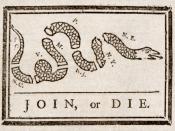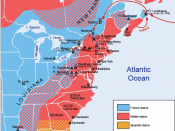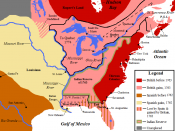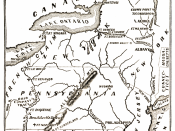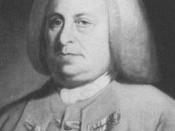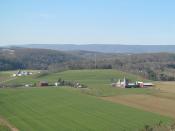Benton and Louise Minks have lived in Leverett, Massachusetts for twenty years, with their daughters, Leah and Erin. Benton Minks is an English teacher at Amherst Regional High School in Amherst, Massachusetts. Furthermore, he has a master's degree in American literature. Louise Minks has a master's degree in American history and is a teacher. Moreover, she is an artist and a member of the education staff of Memorial Hall Museum in Deerfield, Massachusetts. Her interest in art and books has also led her to write and illustrate two limited-edition handmade books. Both husband and wife have written books by themselves, but their common fascination with history allowed them to write The Revolutionary War and The French and Indian War together. Benton has written One Hundred Best Hitters and Baseball Managers, while Louise wrote The Hudson River School, a book about America's first landscape artists.
In The French and Indian War, Benton and Louise Minks express their belief that contemporary societies should learn from the mistakes and lessons in the past.
Furthermore, the Minks deem that history reflects itself and "puts modern ideas and institutions in perspective"ÃÂ (6). Throughout the volume, the authors equally represent both the British and French, never taking sides. For example, a section dedicated to the French cause always follows a section that focuses on the British, and vice versa. Furthermore, the Minks supplement the book with primary and secondary quotes, which gives a first-hand experience to the readers. To cite an instance, Benton quotes James Fenimore Copper's book The Pathfinder (66) to explain how novelists at the time could shape public opinion. However, the Minks never use a possessive tone throughout the book; the edition is strictly for informative purposes. Moreover, the writers focus on the strategies of both sides instead so much on the details of the actual battles. These focal points permit the readers to understand how to prevent the same conflict from occurring again.
While creating this informative recount of the events of the French and Indian War, Benton and Louise had a specific reason in mind. The question of why one should study history always crosses student's minds, but no one can really answer it. In this volume and the rest of the series, the authors try to fulfill this mind gap. One logical answer is that studying past events helps explain how certain customs, ideas, and institutions came to be. As Winston Churchill said, "Every nation or group of nations has its own tale to tell. Knowledge of the trials and struggles is necessary to all who would comprehend the problems, perils, challenges, and opportunities which confront us today."ÃÂ However, both being teachers, Benton and Louise Minks wrote this historical novel partly to teach students about basic research skills and how to write about history. The quotes within the context help familiarize students with the citation process and allow them to verify quotes and look up the original source if the quote piques their interest. In the same fashion, the Minks added an annotated bibliography to introduce students to all the sources the author consulted when writing the volume and stimulate further research. In addition, a chronology of important dates gives students an overview, at a glance, of the topic covered, and the glossary of difficult terms enhances the students' vocabulary. In other words, the volume is designed not only to acquaint readers with the basics of history, but also to make them aware that their lives are a part of "an ongoing human saga"ÃÂ (7).
Finally, Benton and Louise Minks succeed at manifesting their purposes for teaching students of past events. By using the various reference pages, such as the chronology and the glossary, students have all the knowledge they need about the French and Indian War at their fingertips. In conclusion, after reading The French and Indian War by Benton and Louise Minks, one gains great insight. The book does not only concern itself with the battles and events occurred, but also the effects of these occurrences on society and citizens of the soon to become the United States of America.
